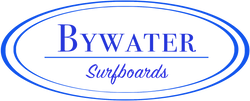Tips for Successful Surfboard Making … Gluing in Fin Blocks

Once your frame has been shaped, you’re almost ready to put the skins on. But first - you must fix and glue in the fin blocks so your fin boxes can be installed later on. These fin blocks are pieces of paulownia timber that fit between the ribs and will offer depth for routing out the shape of the fin boxes.
The placement and amount of timber depend on what your fin placement will be; a single, twin, 2+1, thruster …If you purchase your fin boxes with our kits, we will supply you the correct amount of timber to match. You’ll also need to add in some timber above the fin blocks so there is enough material for the vent to be screwed into later.
As always we recommend a dry run here to ensure you have the right placement before gluing. We recommend the use of Techniglue epoxy resin for an extra strong hold.
The L & R fins can be tricky as they aren't wedged between the ribs so you can hold them in with tape while the glue goes off. You can also secure a brace over the fin blocks using a strip of ply to ensure they are set flush to the rail.
Any excess glue or squeeze-out should be wiped off now, instead of sanding it back when it is hard. After leaving for 24 hours to fully set, a sand and shape is required to ensure a smooth surface for the skins to sit on.
The final finish to the frame is removing waste/excess material to make for a lighter board. Using a hole saw to drill out holes in the nose and tail block, our detailed instruction guide will advise where and how to do this effectively.
You may wonder - how do you know where to route out for the fin boxes when the skins are on? Once the fin blocks are in place, we take a sheet of clear/transparent plastic to trace the set up of the fins/tail ends. Using a permanent pen, mark out the tail shape, the outlines of the fin blocks and the first few ribs. Repeat this process for the nose. Once the skins are on the board - this reference will help you determine where you can route into the board.
Next on the line up, we'll be gluing the skin panels together to make the bottom and deck skins.




